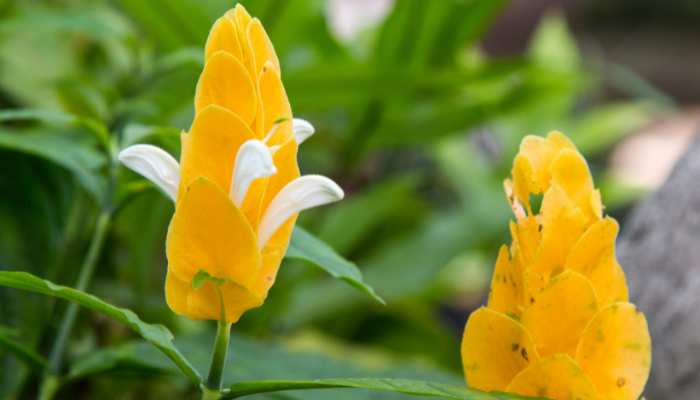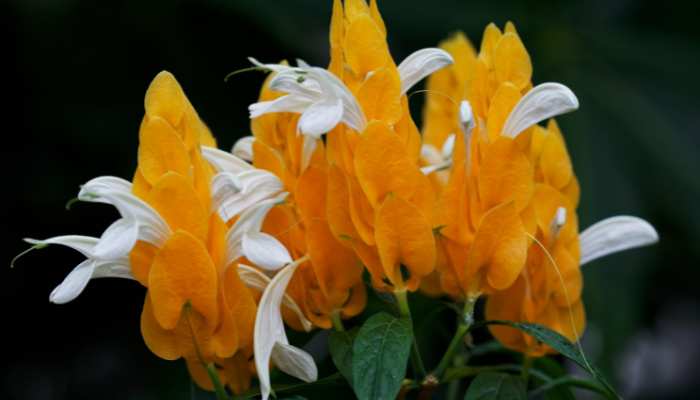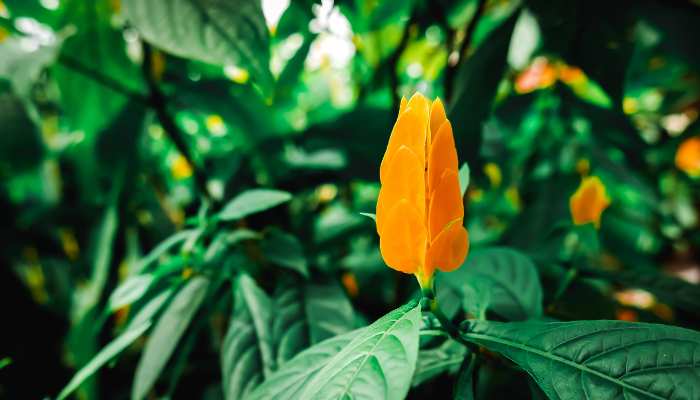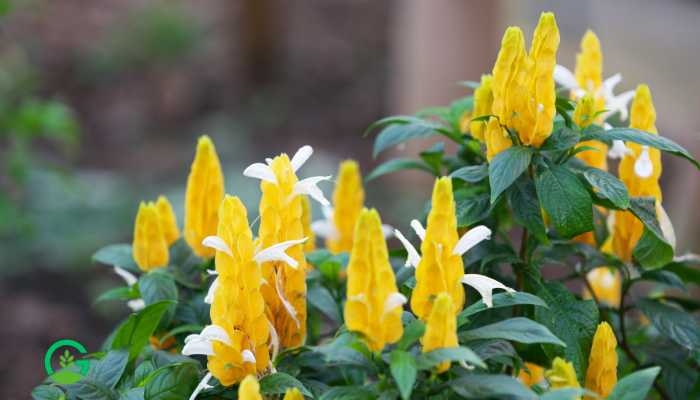If you’ve ever wanted to add a pop of color and whimsy to your garden, the lollipop flower plant might just be the perfect addition. This vibrant and easy-to-care-for plant can bring a touch of the tropics to your home, delighting both the eyes and the senses.
In this article, we’ll explore everything you need to know about growing and caring for lollipop flower plants, ensuring they thrive and bring joy to your garden.
Lollipop Flower Plant Table of Contents
Introduction to the Lollipop Flower Plant
The lollipop flower plant, scientifically known as Pachystachys lutea, is a striking tropical plant that boasts vibrant yellow flowers resembling lollipops. Native to Central and South America, this plant can add an exotic touch to gardens and indoor spaces alike. But how do you ensure that your lollipop flower plant not only survives but thrives?
Choosing the Right Variety
There are various types of lollipop flower plants, each with unique characteristics. The most common variety is the yellow lollipop plant, but there are also orange and red varieties available. When choosing a variety, consider your local climate and the specific growing conditions you can provide.

Ideal Growing Conditions
Light Requirements
Lollipop flower plants thrive in bright, indirect sunlight. They can tolerate some direct sunlight, especially in the morning, but too much direct sun can scorch their leaves. If you’re growing them indoors, a spot near a south or east-facing window is ideal.
Temperature and Humidity
These plants prefer warm temperatures between 65-75°F (18-24°C) and high humidity levels. If you live in a dry climate, consider using a humidifier or placing a tray of water near the plant to increase humidity.
Planting the Lollipop Flower
Choosing the Right Spot
Select a location with well-draining soil and good air circulation. If planting in a garden, ensure the spot gets partial shade. For container planting, choose a pot with drainage holes to prevent waterlogging.
Planting Steps
- Prepare the Soil: Use a mix of potting soil and organic compost to enrich the soil.
- Dig a Hole: Make a hole twice the size of the plant’s root ball.
- Plant the Lollipop Flower: Place the plant in the hole, cover with soil, and gently pat down.
- Water: Water thoroughly to help the plant settle in.
Watering Requirements
Lollipop flower plants require consistent moisture but do not like to sit in water. Water the plant when the top inch of soil feels dry. During hot weather, you may need to water more frequently. In contrast, reduce watering in the winter months when the plant’s growth slows.

Soil and Fertilization
Soil Type
Well-draining soil is essential for lollipop flower plants. A mix of peat, perlite, and potting soil works well. This combination ensures good drainage while retaining enough moisture for the plant’s roots.
Fertilization Schedule
Fertilize the plant every two weeks during the growing season (spring and summer) with a balanced, water-soluble fertilizer. Reduce feeding in the fall and stop completely in winter to give the plant a rest period.
Pruning and Maintenance
Why Prune?
Pruning helps maintain the shape of the lollipop flower plant and encourages bushier growth. It also removes dead or damaged leaves, promoting overall plant health.
How to Prune
- Use Sharp Shears: Clean and sharp pruning shears prevent damage to the plant.
- Remove Dead Growth: Cut back any yellowing or dead leaves.
- Shape the Plant: Trim back leggy stems to encourage a fuller plant.
Dealing with Pests and Diseases
Common Pests
Lollipop flower plants can attract pests like aphids, spider mites, and whiteflies. Regularly inspect your plant for signs of infestation.
Treatment
- Natural Remedies: Use neem oil or insecticidal soap to treat infestations.
- Preventive Measures: Maintain good air circulation and avoid overwatering to prevent mold and mildew.

Propagation Methods
From Cuttings
Propagating lollipop flower plants from cuttings is the most common method. Here’s how:
- Take a Cutting: Cut a 4-6 inch stem from a healthy plant.
- Remove Lower Leaves: Strip off the leaves from the bottom half of the cutting.
- Plant the Cutting: Place the cutting in a pot with moist potting mix.
- Cover and Wait: Cover with a plastic bag to retain humidity and place in indirect sunlight until roots develop.
From Seeds
Growing lollipop flower plants from seeds is less common but possible. Plant seeds in a seed-starting mix, keep them moist, and provide warm temperatures to encourage germination.
Seasonal Care Tips
Spring and Summer
This is the growing season for lollipop flower plants. Ensure they receive adequate water and fertilizer. Regularly check for pests and prune as needed to encourage growth.
Fall and Winter
During the cooler months, reduce watering and stop fertilizing. Move indoor plants away from drafts and ensure they still receive enough indirect light.
Lollipop Plant Care Guide: How to Nurture Your Sweet Succulent
Read More
Benefits of Growing Lollipop Flower Plants
Aesthetic Appeal
The vibrant flowers of the lollipop plant add a splash of color to any garden or indoor space, making them a popular choice for decorative purposes.
Easy Maintenance
Lollipop flower plants are relatively low-maintenance, making them ideal for both novice and experienced gardeners.
Attracts Pollinators
These plants attract pollinators like bees and butterflies, which can help improve the overall health of your garden.
Common Mistakes to Avoid
- Overwatering: Too much water can lead to root rot. Ensure the soil drains well and only water when necessary.
- Insufficient Light: Without enough light, the plant may become leggy and produce fewer flowers. Ensure it gets bright, indirect sunlight.
- Neglecting Pruning: Regular pruning keeps the plant healthy and promotes growth.
Conclusion
Growing and caring for a lollipop flower plant can be a rewarding experience. With their bright, cheerful blooms and relatively easy care requirements, these plants can be a delightful addition to any home or garden. By following the guidelines outlined in this article, you’ll be well on your way to enjoying the beauty and benefits of lollipop flower plants for years to come.
Frequently Asked Questions
How often should I water my lollipop flower plant?
Water the plant when the top inch of soil feels dry. This usually means watering every few days in hot weather and less frequently in cooler months.
Can I grow lollipop flower plants indoors?
Yes, lollipop flower plants can thrive indoors if they receive bright, indirect sunlight and adequate humidity.
What should I do if my plant’s leaves turn yellow?
Yellow leaves can indicate overwatering, insufficient light, or nutrient deficiencies. Check your watering schedule, light conditions, and consider fertilizing.
How do I propagate a lollipop flower plant from cuttings?
Take a 4-6 inch cutting from a healthy plant, remove the lower leaves, and plant it in a moist potting mix. Keep it covered with a plastic bag to maintain humidity until roots develop.
What pests commonly affect lollipop flower plants?
Common pests include aphids, spider mites, and whiteflies. Regular inspection and treatment with neem oil or insecticidal soap can help manage these pests.
















